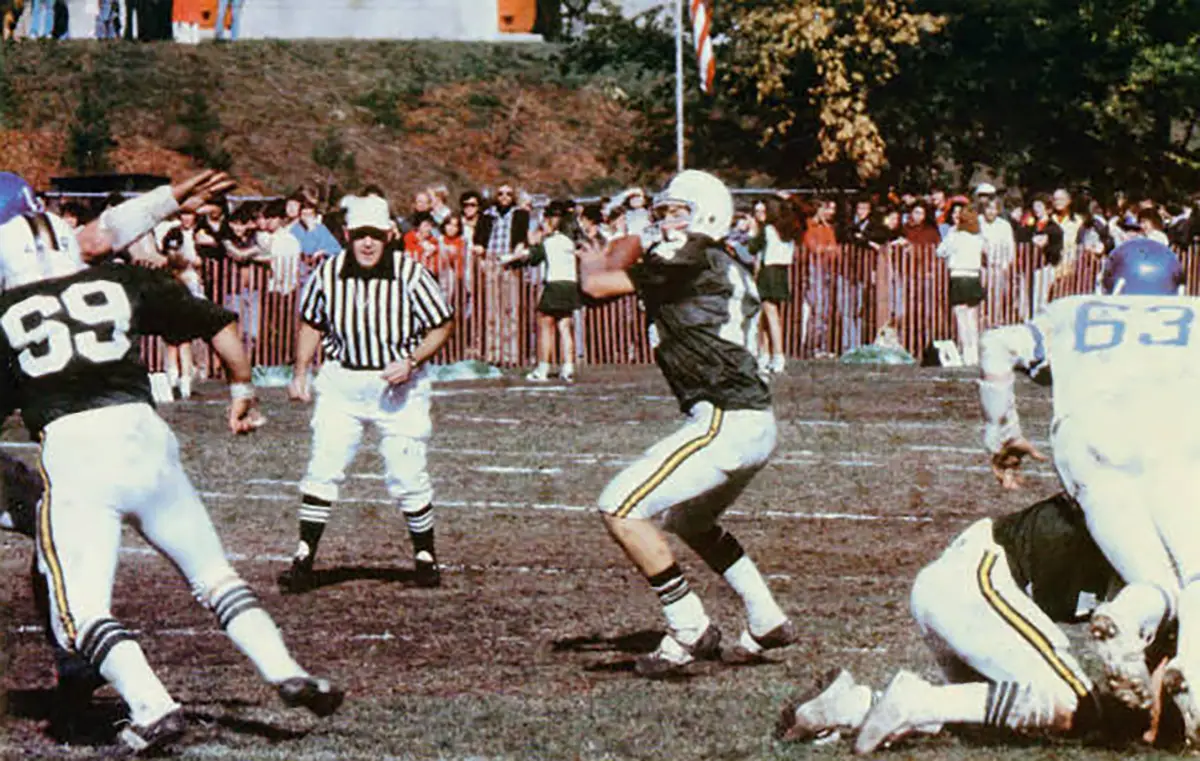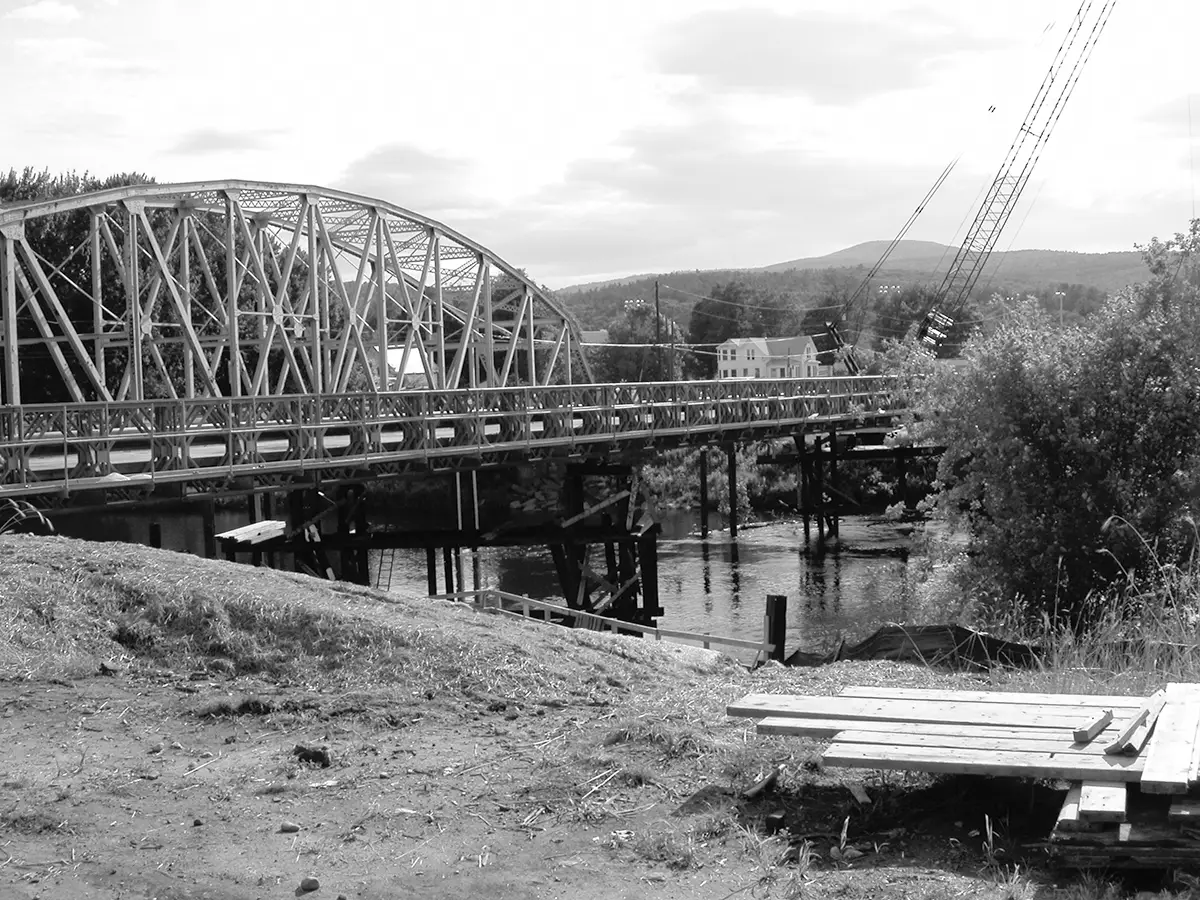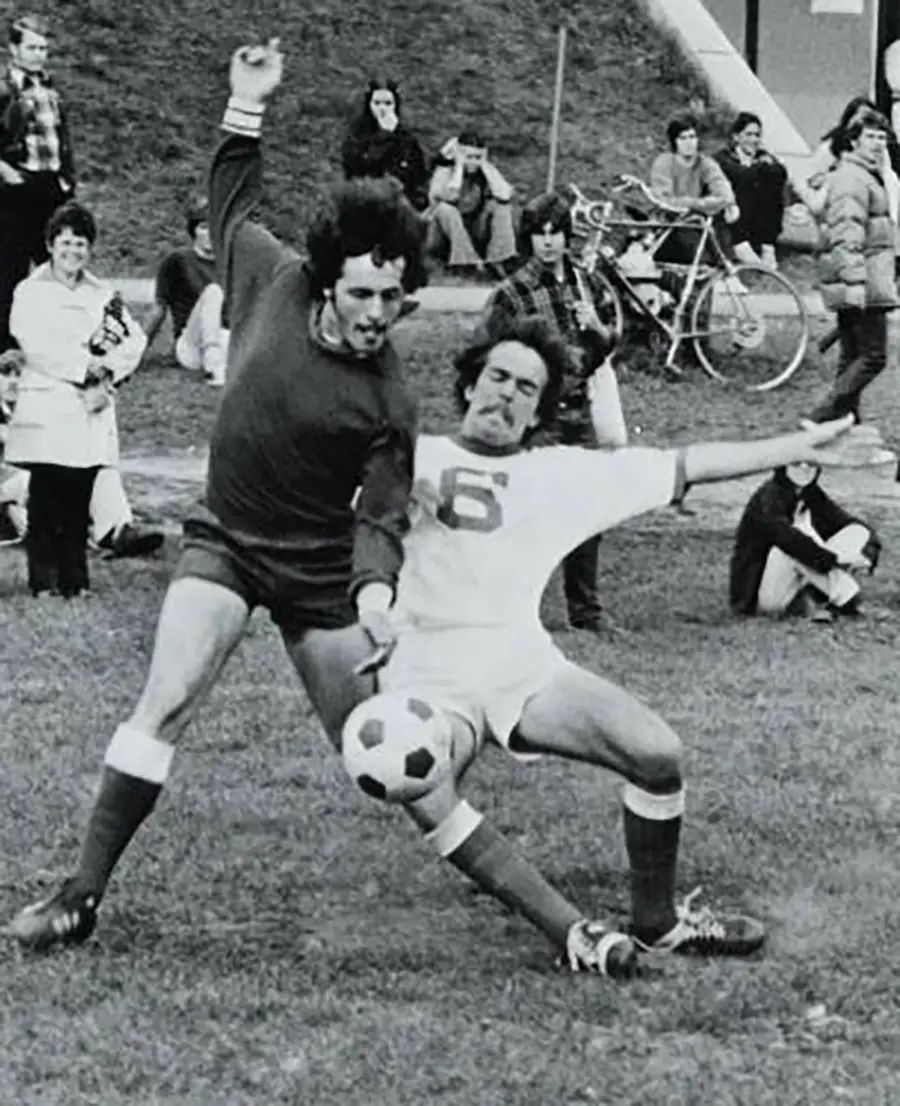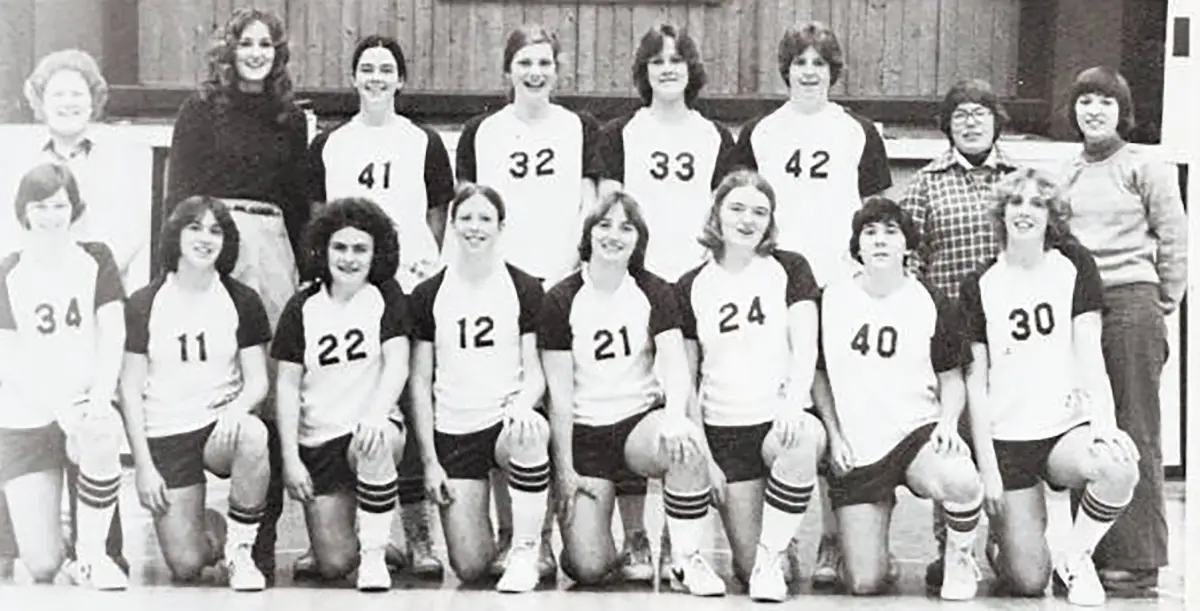There have never been any shortcuts and the trips could be a real love-hate relationship, especially if the weather was poor. A knee injury like that suffered by Kathy O’Connor ’80 (soccer/softball) or Meg Pickett-Hendy’s ’79 (field hockey/lacrosse) sprained ankles made it that much harder, but both hobbled and persevered.
“That walk down to the field house everyday was the most memorable in the winter,” says Vicki Parady-Guay ’79 (softball/tennis/basketball/lacrosse). “Crossing the bridge seemed to always be so bitterly cold and windy. In the spring, there was a chance of flooding and having to help sandbag the field house, and of course, in the spring it was a chance to tube with one of the prime exit spots located at the bridge. A spring ritual.”
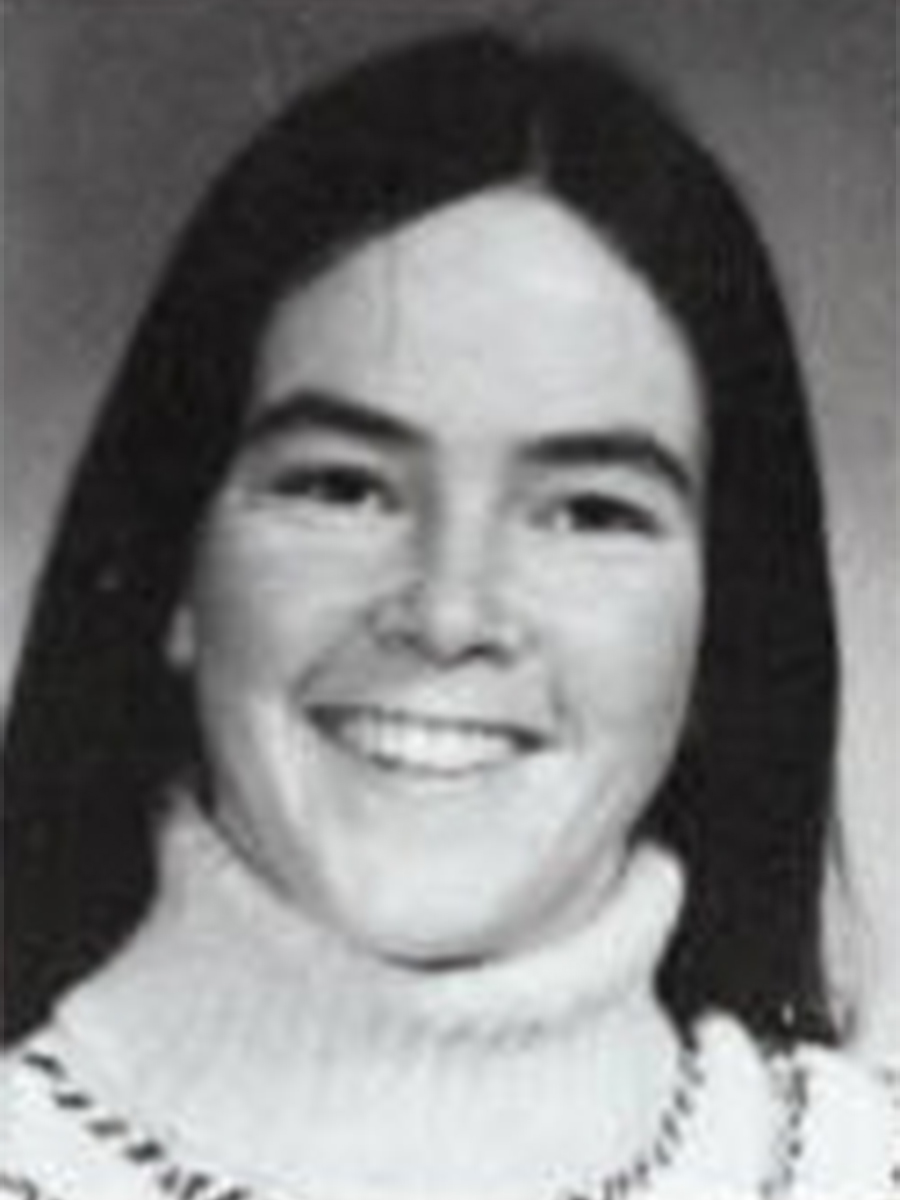
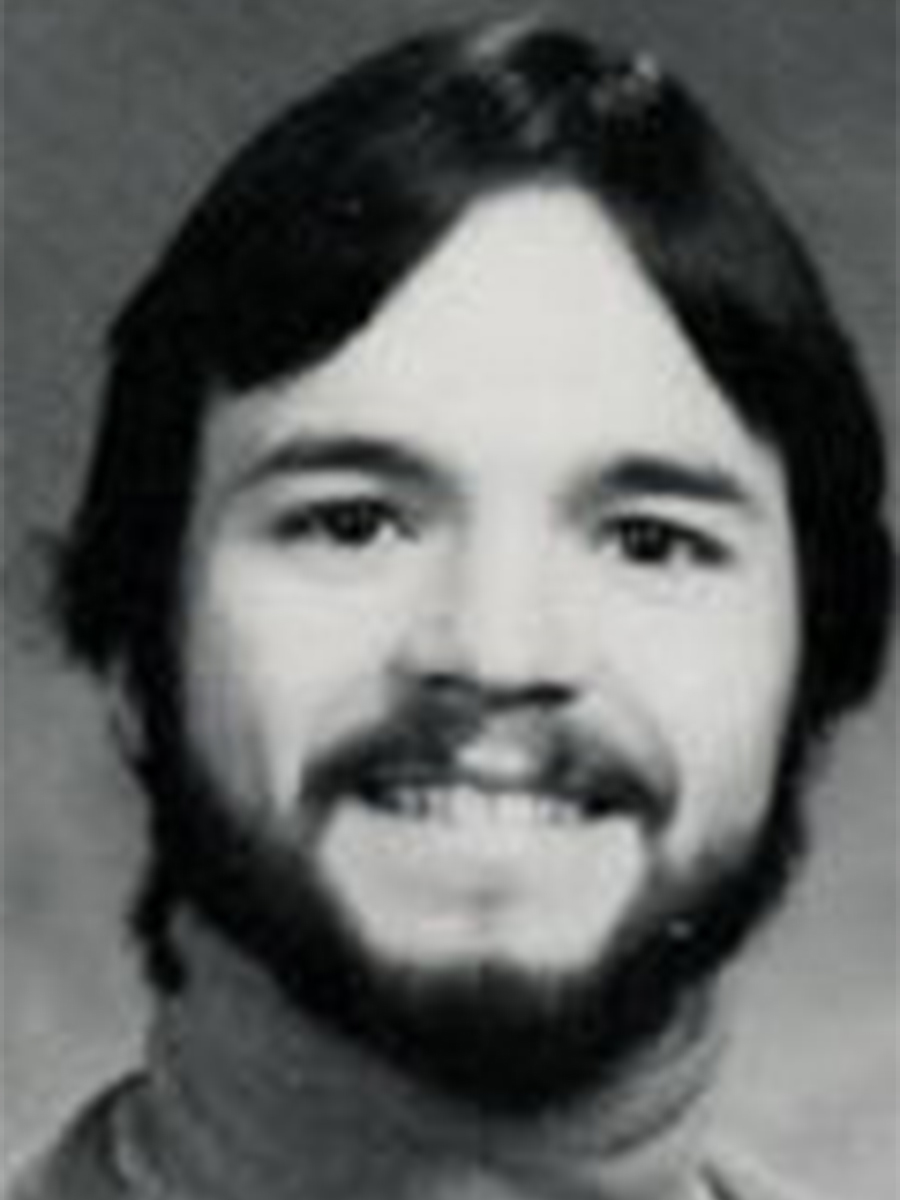
The iron span also prompts many good memories. For Dan Chick ’70 (baseball) it’s, “A visit to the Grotto located across from the baseball field to grab the best roast beef sub after practice and the walk back to Silver Hall.” Norm Sherwood ’89 (soccer/baseball) learned how to organize and reflect with the early morning practice sessions and Carol Rogers-Nelson ’91 (soccer) and her teammates would bond and solve the problems of the day.
Walking wasn’t the only option. Dave Morissette ’94 (basketball) recalled, “Piling into a teammate’s car immediately after a winter practice so I wouldn’t have to face the icy, chilly winds and cold. It became a contest to see who was lucky enough to get a ride in one of the few available vehicles and now the memory creates laughter at player reunions.”
The iconic bridge was reconstructed in 2005 and dedicated as the Captain Douglas A. DiCenzo Memorial Bridge in 2008; Captain DiCenzo was the son of famed Panther wrestler and former assistant wrestling coach Larry DiCenzo ’73.
Notable seasons produced nicknames like the “Green Shield” for the ’75 Men’s Soccer Team or the “Green Wall” defense of the ’78 Football Team. Individuals became “The Cat” (Peter Simonini ’89) and “the Rat” (Chris Rasmusson ’85), while celebrity athletes needed only first names like “Joe,” (Dudek ’87) “Steve” (Clark ’86), and “Moses” (Jean-Pierre ’95), indicative of the sudden fame a top Panther athlete could claim during their time.
From 1956 to 1969, Silver Hall was the center of the Panther sports world. Perhaps the most talked about contest was the infamous Boston State-Plymouth State men’s basketball game in 1969 for the NESCAC Northern Division Championship in a packed house. Our Panthers were victorious in a wild and contentious finish with BSC Head Coach Jim Loscutoff grabbing the head official at the end.
PSC-KSC men’s teams played 170 minutes of scoreless soccer in 1975 before a home crowd of 2,500 plus. Panther football achieved national recognition in the 80’s led by Joe Dudek, creating a continuing mystique. The women’s soccer team led by Coach Phil Rowe ’74 advanced to the national championship D-3 final in 1986.
Every sport has had certain turning points in their growth and evolution. Coach Janet Nell helped lead the growth of women’s sports in the 70’s and her 1979 Women’s Lacrosse Team enjoyed an undefeated season at 11-0 with top ranking in New England.
Coach Charlie Currier played many roles as a founder, coach, recruiter, and leader of our gridiron program. Gerd Lutter was the architect for the dynasty of soccer teams in the 70’s and 80’s before handing off the program to Shawn Griffin ’88 in 1992.
The connection with the campus experience continues differently for every former athlete but the bonds remain.
“I think there is a bond and a community feeling at Plymouth. People truly care and look out for one another,” explains Norm Sherwood. “There is also a sense of freedom that comes with the outdoors and the fantastic location of Plymouth.”
Stumpf leads a chorus of athletes who refer to their time wearing the Green and White fondly with references to the family feeling, teams, and locker rooms, with professors expressing genuine interest in the student athlete and their sport.
“The Plymouth spirit was contagious with the support of teams rooting for each other,” says Larry Cummings ’85 (football). “The connectivity extended from team to team with no hierarchy and everyone cheering each other on.”
Rich Parker ’83 (Golf/Basketball/Baseball) remembers the “they ain’t us mentality” that was prevalent on so many great Panther teams of the 80’s.
Parady-Guay recalls “You made many friends who played multiple sports. PE was a strong major with your professors also serving as your coaches. Everybody knew each other. It was an environment that had the balance of education, athletics, and fun!”
Morissette has enjoyed meeting fellow alumni at Homecoming, ripe with stories and pride and wearing their vintage Panther gear. “Special memories with more to come,” he adds.
“One good thing about being a member of a team is you instantly have friends,” points out Pinney-Michaud. “The opportunities that PSU provided are embedded in you and become part of your personal history that you carry proudly. Panther athletics gives me a sense of pride whenever I speak about my time at PSU.”
“The chance to reconnect with friends every year at the Dearborn Golf Classic at Homecoming and give back is so important,” says Hendy. “Let’s keep that spirit always.”
“Homecoming is a priority on the calendar with teammates who became my friends, roommates, and godparents to each other’s children,” adds Rogers-Nelson.
Pinney-Michaud expands with, “Panther athletics gives me a sense of pride whenever I speak about my time at PSU.”
O’Connor adds, “Plymouth is the best place on earth. The best of both worlds as an athlete and as a student. The Panther community loves their athletics. You are a name and not a number.” ■ Paul Hogan ’79, ’88G

